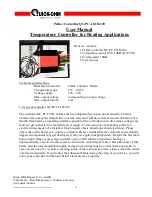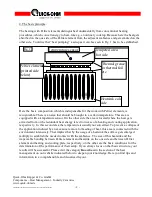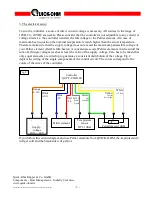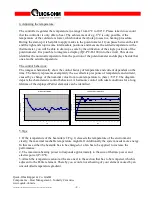
Quick-Ohm Küpper & Co. GmbH
Components – Heat Management – Industry Ceramics
www.quick-ohm.de
20140423User Manual Peltiercontroller Compact Heating.docheating
- 2 -
2. The basic principle:
The heating with Peltier elements distinguishes fundamentally from conventional heating
procedures, which convert energy to heat, like e.g. an ordinary cooktop. Because here the heat gets
absorbed on the one side of the Peltier element from the adjacent ambience and gets emitted on the
other side. To utilize that “heat pumping” a setup as it can bee seen in Fig. 1 has to be established.
Here the basic composition, which is indispensable for the work with Peltier elements, is
recognizable. There is an area that should be brought to a certain temperature. This area is
equipped with a temperature sensor. On the other side the area is located where the heat gets
extracted from or the redundant heat energy is led to in case of a heating and cooling application,
respectively. In this second area the temperature is usually not surveilled. To prevent a collapse of
the application induced by an excessive removal or feeding of heat, this area is contacted with the
environment intensively. That implies that by the usage of a heatsink the surface gets enlarged
multiply to establish the needed contact with the ambience. The size of this heatsink and the
impeccable bonding between Peltier element and heatsink on the one side and between Peltier
element and heating and cooling plate, respectively, on the other are the basic conditions for the
determination of the performance of their setup. If you always focus on that basic structure, your
results will be successful. Please visit the category
Know how
in the section of the heat
management on our website indicated below to deepen your knowledge. Here you find tips and
information in a comprehensible and visualized layout.
Heatsink cold
side
Thermal grease
or thermal foil
etc
Peltier element
(printed side
below)
Tempered area
hot side
Fig. 1:
Temperature sensor






















